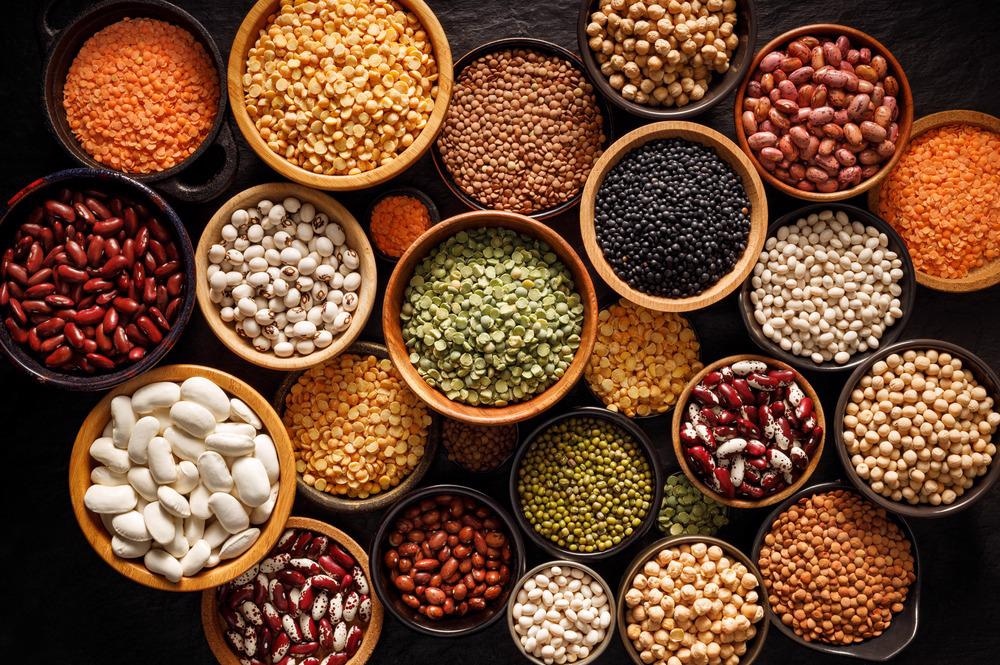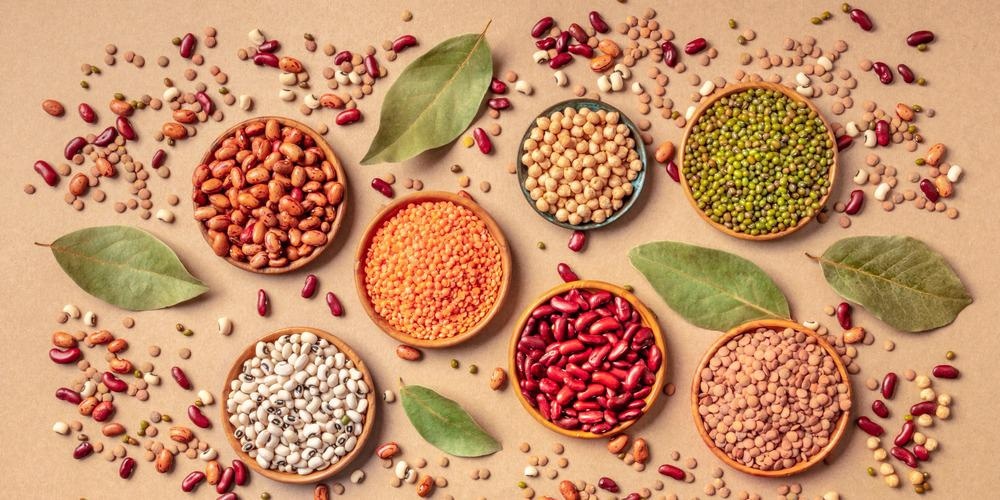The type of food we eat is extremely important for our overall health and fitness. Prolonged consumption of unhealthy foods adversely affects the body, such as decreased immunity, obesity, and illness. A nutritionally balanced diet maintains body weight and enhances metabolic function. Pulses constitute an essential part of a balanced diet. The United Nations (UN) has designated the 10th of February as International Pulse Day in order to make the general public aware of the benefits of pulses as a global food.

Image Credit: pbd Studio/Shutterstock.com
Pulses are the edible seeds or dry grains of the plants, belonging to the Legume family. Some common examples of pulses, which have been used as a staple for many civilizations, are lentils, dried beans, peas, faba beans, and chickpeas. According to the definition of the Food and Agriculture Organization (FAO) of the UN, pulses exclude legumes that are used for oil extraction, such as soybean and peanut, and those legumes that are harvested green. As an example, green peas and green beans are considered vegetables and not pulses.
Nutritional Benefits of Pulses
Pulses are packed with essential nutrients, such as proteins, vitamins, micronutrients, carbohydrates, and are, therefore, vital for a balanced diet. Some of the nutritional values of pulses are discussed below:
Carbohydrates and fibers: Pulses contain a high amount of complex carbohydrates, such as amylose, oligosaccharides stachyose, and pentosans. They also contain both soluble and insoluble fibers.
Proteins: Overall, pulses contain a high amount of amino acids. They are rich in lysine but contain a low amount of two types of essential amino acids, i.e., methionine and cysteine. Compared to other foods, like rice and wheat, pulses contain an increased concentration of proteins, ranging from 17-30% of dry weight, which is approximately double the amount found in cereals. Proteins play an important role in improving the overall strength of the body. They also enhance the repairing and maintenance power of the body.
Vitamins and minerals: Pulses are a great source of calcium, potassium, zinc, iron, copper, phosphorus, and magnesium. They are rich in folic acid which helps produce new cells. Pulses constitute an elevated amount of Vitamin B, thiamine, and niacin.
Phytochemicals: Pulses are a rich source of polyphenols that have antioxidant properties. Antioxidants protect the cells from damage against free radicals produced as a by-product during metabolism. Faba beans contain a considerable amount of saponins and tannins.
Pulses and Health Problems
Pulses and pulse products that include pulse flours, and split pulse, offer an abundance of nutritional benefits (protein, starch, fiber, bioactive components) and help prevent several chronic diseases of global concern. According to a new study, pulses mitigate many health concerns including obesity, diabetes, heart disease, and cancer.
Pulses promote the transportation of oxygen throughout the body owing to their rich iron content. Further, they boost metabolism. Fibers present in the pulses improve the issues related to bowel problems. Importantly, fibers bind to the toxins and cholesterols in the gut and, thereby, promote their removal from the body.
As pulses lower the glycemic index, which is associated with lowering blood sugar levels, it lowers the risk of diabetes. Importantly, pulses can regulate blood sugar levels even in a diabetic person. Researchers have stated a diet containing high fiber, low glycaemic load with moderate protein content plays an important role in controlling weight. The high fiber and complex carbohydrates content are associated with slow digestion, which in turn gives a feeling of satiety. All these characteristics help to control obesity.
Pulses are low in fat and rich in fiber, which plays an important role in managing cholesterol levels. Many heart diseases are related to high cholesterol levels. A randomized controlled human clinical trial had been conducted to determine the effects of pulse consumption on cholesterol levels. This study revealed that a pulse-rich diet decreases total and LDL cholesterol, which is predominantly because pulses contain high soluble fiber. Additionally, pulses contain plant sterols that have a cholesterol-lowering effect.
A high insoluble fiber content improves colon health. The antioxidants of the pulses possess anti-cancer properties. The embryo of the pulses contains Vitamin E, which is a known antioxidant. Pulses contain more potassium than sodium, which plays an important role in regulating hypertension. Lentils contain selenium, which decreases the rate at which a tumor grows. Additionally, pulses boost immunity and promote T cell production, which fights against diseases.

Image Credit: Plateresca/Shutterstock.com
Anti-nutrient Content of Pulses
Raw pulses also contain a high concentration of anti-nutrients, e.g., phytate, tannin, and phenol, that inhibit the absorption of important minerals (iron and zinc) in the body. FAO advocates for more research in breeding strains of pulses that contain lower levels of phytate, which could minimize the problems of inhibition of absorption of important minerals by the body.
Even though pulses are rich sources of balanced food, people are ignorant about their nutritional benefits. One of the reasons why pulses are underestimated is their lengthy cooking time. Additionally, some beans contain oligosaccharides, a type of carbohydrate that is not easily digested, causing flatulence upon ingestion.
Researchers have come up with simple practices that can drastically lower the anti-nutrient content (phytate) in pulses. One of the simple strategies is soaking pulses in water for four to eight hours Soaking not only reduces the cooking time but also lowers the phytate content such that the nutrients can be easily absorbed by the body. Additionally, soaking ensures that pulses can be easily digested, which reduces the propensity to cause flatulence. Besides water, soaking in sodium bicarbonate solution is also effective to reduce the anti-nutrient content of pulses.
Sources:
- Health benefits of Pulses. Food and Agriculture Organization of the United Nations. (2021) [Online] Available at : https://www.fao.org/documents/card/en/c/f8ca4edf-8fad-49d0-abe4-bf038139d540/
- Mudryj, A.N. et al. (2014) Nutritional and health benefits of pulses. Applied Physiology Nutrition Metabolism. 39(11). pp.1197-204. doi: 10.1139/apnm-2013-0557.
- Curran, J. (2012) The nutritional value and health benefits of pulses in relation to obesity, diabetes, heart disease, and cancer. British Journal of Nutrition. 108(S1). S1-S2. doi:10.1017/S0007114512003534
- Khandelwal, S. et al. (2010) Polyphenols and tannins in Indian pulses: Effect of soaking, germination and pressure cooking. Food Research International. 43. pp. 526–530. https://doi.org/10.1016/j.foodres.2009.09.036
- Vadivel, V. and Pugalenthi, M. (2009) Effect of soaking in sodium bicarbonate solution followed by autoclaving on the nutritional and antinutritional properties of velvet bean seeds. Journal of Food Processing and Preservation. 33. pp. 60-73.
Further Reading
Last Updated: Feb 15, 2022